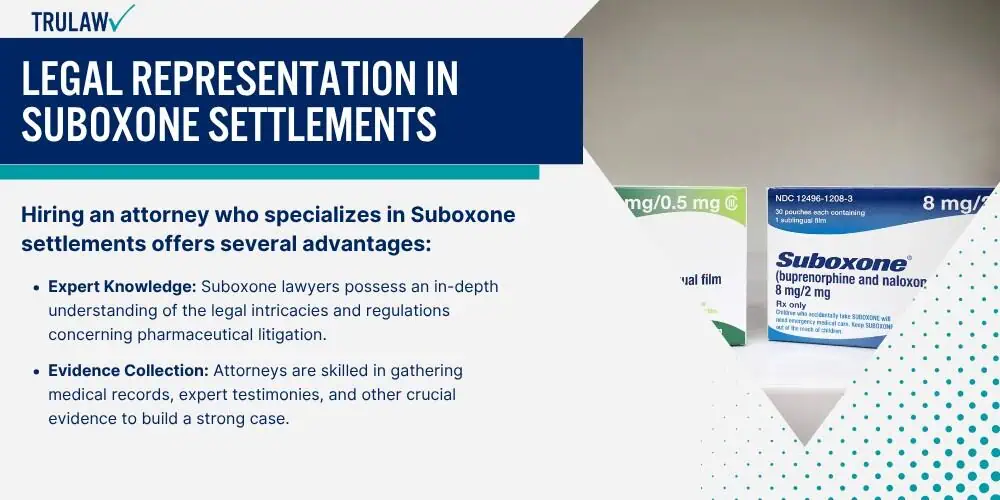The manufacturers revised the warning labels for Suboxone only in 2022, prompting numerous lawsuits from those affected before this change.
Victims claim that they were blindsided by these risks.
Legal cases emphasize the need for compensation due to these undisclosed dental problems.

Notably, there is a growing number of state and federal lawsuits aiming to secure settlements for affected individuals.
The lawsuits underscore the importance of holding pharmaceutical companies accountable for inadequately warning about significant drug risks.
The ongoing litigation serves as a reminder of the critical need for transparency in the pharmaceutical industry.
Victims who suffered dental injuries due to Suboxone usage may qualify for settlements.
Specific eligibility criteria consider prescription timelines, types of dental harm experienced, and geographical limitations.
Who Qualifies for Suboxone Lawsuit Settlements?
To qualify for Suboxone lawsuit settlements, individuals must have experienced severe dental injuries from using Suboxone.
These injuries include issues such as:
- Tooth decay
- Tooth loss and extraction
- Infections
- Cracked teeth
- Cavities
- Root canal
- Dental caries
Additionally, plaintiffs must have used Suboxone before 2022, as warnings about dental risks were introduced only later.
Those who were prescribed Suboxone between March 1, 2013, and February 28, 2019, are particularly relevant due to the FTC’s settlement.
Factors Affecting Suboxone Settlement Eligibility
Suboxone lawsuits require careful documentation and timely action to be eligible for settlement.
Each claimant must meet specific criteria to ensure their case is considered valid.
Several key factors determine eligibility for Suboxone settlements:
- Location: Legal actions are pursued in specific states where Suboxone lawsuits are currently active. These states include Arkansas, Connecticut, and more, with the recent inclusion of Florida and Michigan.
- Medical Documentation: Claimants need comprehensive medical records showing the prescription and use of Suboxone. Detailed dental records indicating the specific dental injuries and treatments undergone are also essential.
- Timely Filing: Adhering to the statute of limitations is critical. Plaintiffs must file their cases within the legally specified time frame to ensure eligibility. Cases filed after this period may not be considered.
- Proof of Harm: Clear evidence linking Suboxone use to the claimed dental injuries is required. This includes expert testimony and scientific evidence supporting the nexus between Suboxone’s acidic formulation and dental damage.









